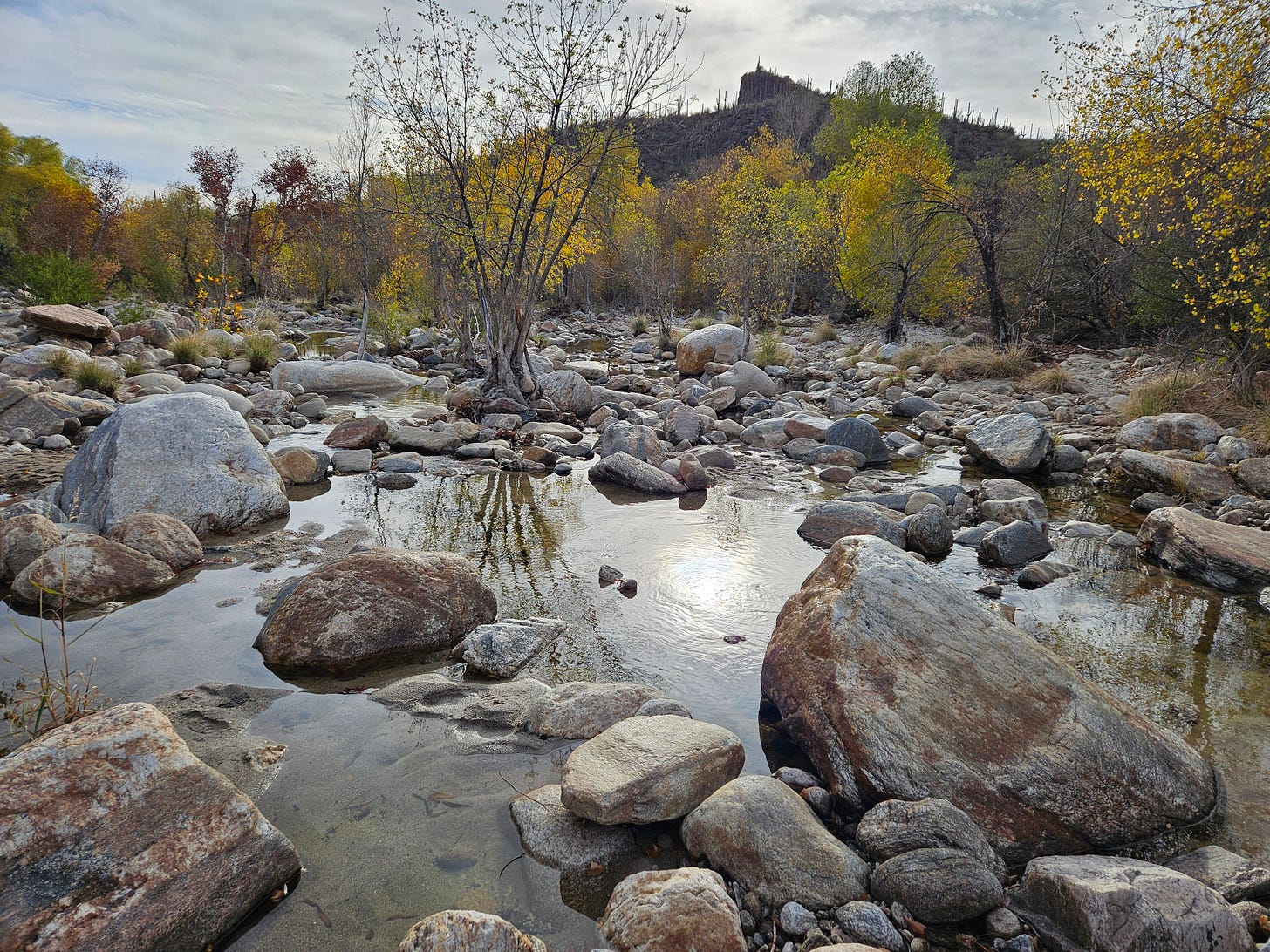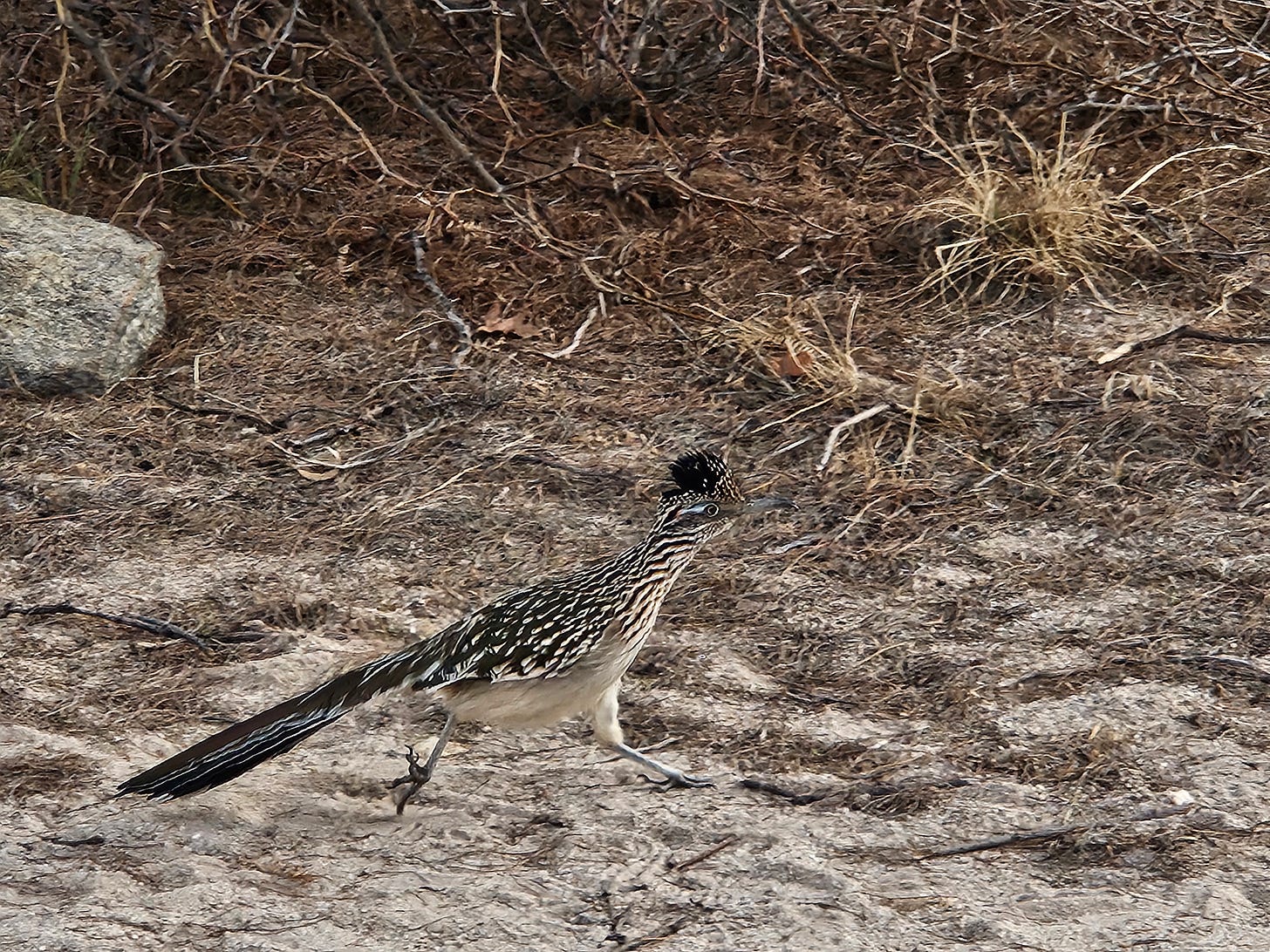In the Swim, Bike, Run series in December, we chased athletes and water through Coachella Valley, California. New years in Tucson, Arizona is an opportunity for us to look at a different desert locale through the lens of water. You can read all the previous travel posts here.
The same...
Much of the western United States has a basin and range topography, where parallel fault lines running northwest to southeast have fractured the crust into blocks which have tilted, leaving ridges and valleys. Many of these valleys have filled with sediment from erosion of the surrounding hills. The sediments contain aquifers. Coachella Valley, home to desert cities from Palm Springs to Indio, and the alluvial plain that is home to Tucson are examples of this geomorphology.
Tucson is in the Sonoran Desert, characterized by the iconic saguaro cactus. The Coachella Valley's Colorado Desert is very similar but lacks the charismatic megaflora. There are two rainy seasons: pacific storms in the winter and monsoons in the summer. The rain used to be sufficient to keep both the Whitewater River in the Coachella Valley and the Santa Cruz River in Tucson free flowing, but diversions for agriculture and excessive pumping of the underlying aquifers have led to both riverbeds being dry for most of the year. Former springs at the edges of the valleys are also now dry.
Both locales replenish their aquifers with reclaimed water and water from the Colorado River. The Central Arizona Project's 336-mile canal brings water from Lake Havasu on the Colorado River to Tucson. The Coachella Canal and Colorado River Project deliver water to the Coachella Valley, as discussed here. In both cases, the water is released into the dry riverbeds from where it percolates into the aquifer.
...but different
Just down the Santa Cruz River from Tucson, the Las Capas site near Marana shows evidence of continuous occupation since 13000 BCE. The oldest irrigation canal system in the US was built here 4000 years ago to divert water from the Santa Cruz River for the intensive cultivation of maize.
The Desert Cahuilla People have inhabited the Coachella Valley for around 3000 years. Although hunter gatherers rather than agriculturalists, they did make use of the water. As the Augustine Tribe writes:
WATER WELLS
For the Cahuilla People, living in a hot and dry desert environment, water has always been considered a precious natural resource essential for survival. Cahuilla villages were often located near a reliable water source such as a creek, a spring or hand-dug well. In the early years the Cahuilla were blessed with an underground aquifer that flourished with clean and pure water. So plentiful was the water that in some places artesian wells would form where the water would rise up to the surface without the need of pumping. The Desert Cahuilla were one of the few American Indian tribes to dig their own water wells. A few of these ancient wells still exist in the desert floor today. The Cahuilla called these wells “temakawomal” or “earth olla.” These hand-dug wells descended in a series of stair-steps down into the earth. The wells were dug gradually as the water table lowered. Paths were dug deeper and deeper to maintain access to the water. This practice also provided animals with access to water to drink, thus assuring their continued presence.
Today, alas, both river and wells are dry.
While the Coachella Valley drops from over 1000 feet in elevation to below sea level, Tucson sits at around 3000 ft and has a little more rainfall. It's still possible to see flowing water in the mountain creeks that feed the Santa Cruz River. What's left of the Santa Cruz River makes its way via the Gila River to the Colorado and the Sea of Cortez. The Coachella Valley's Whitewater River's occasional trickle ends up in the endorheic basin of the Salton Sea.
Tucson lacks the numerous golf courses and other ostentatious uses of water found in the Coachella Valley. There is also much less agriculture in the area. These are elements in Tucson's favor as climate change continues to challenge the Colorado river.
I ran across an article from the US Geological Survey on the use of microgravity measurements to track aquifer depletion in the Tucson area. Note that NASA's Gravity Recovery and Climate Experiment (GRACE) has measured significant groundwater depletion around the world in recent years. One of our county commissioners has asked me to talk to some concerned constituents about aquifer depletion on our island. I wondered if microgravity might help, so I reached out to the author of the article to ask. I sent the email new year's day and received an answer from her colleague at 8:30 the following morning. The short answer is that it wouldn't help in our case as we have a shallow aquifer and too much water in the surface layers. Pro tip: if you email a government scientist with a question, you'll get an answer quickly. They're just thrilled that anyone actually reads their work!
I'll be back in a few days to let you know about the meeting with concerned constituents.
Thanks as always for reading or listening. Please join me in the comments, and feel free to share.









I had no idea about the wells--so fascinating, I love that country. Those charismatic megaflora have a way about them for sure. Look forward to hearing more about how things progress, thanks for sharing this John. 🌵
Beautiful, John. Do you know if any traditional Cahuilla wells exist today?